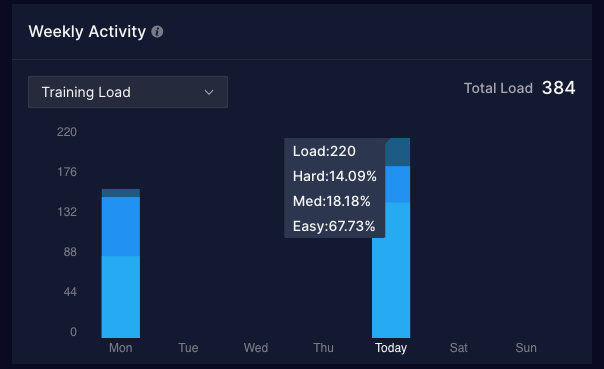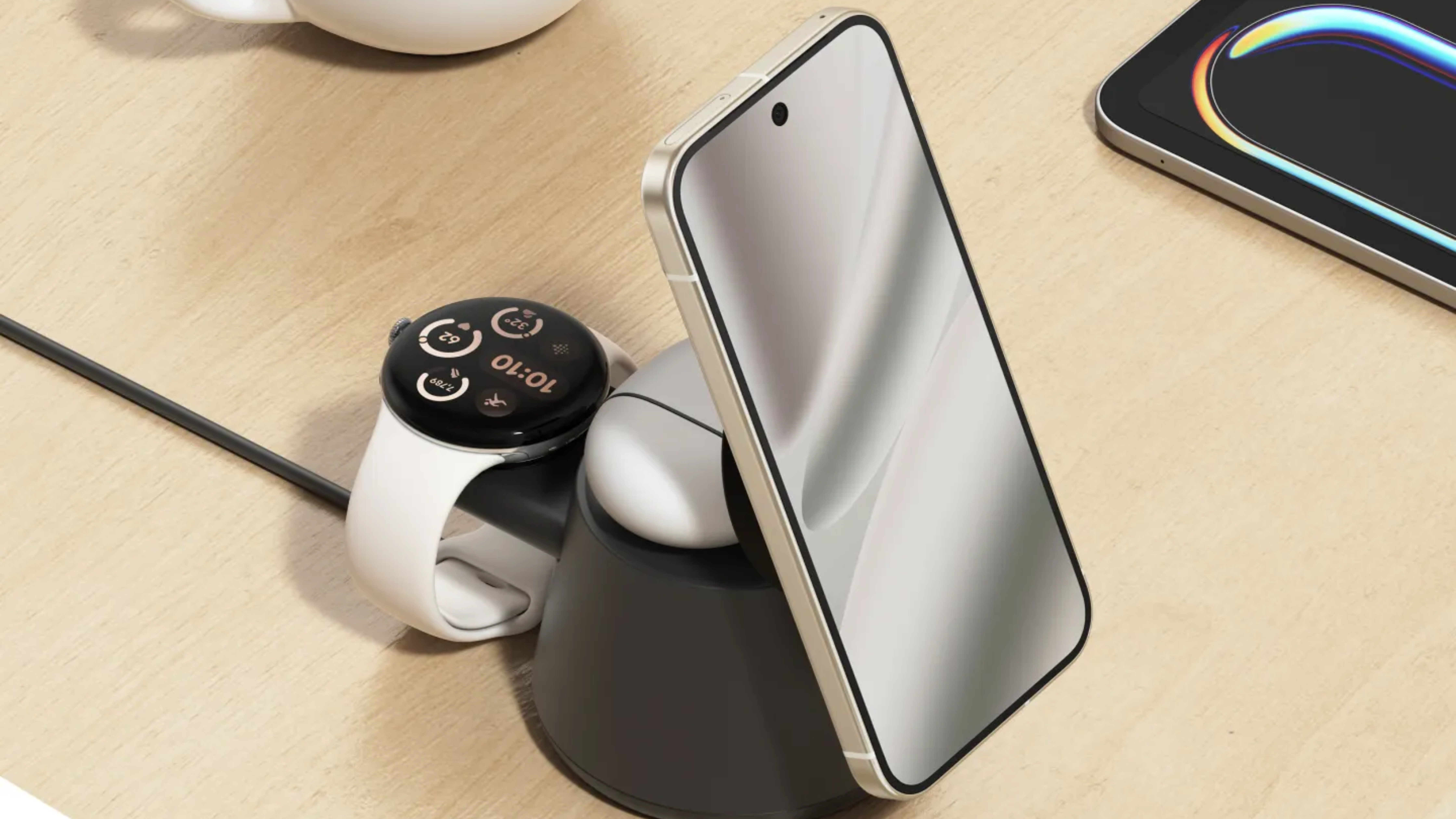I depend on this Garmin training tool to improve, but it needs one obvious fix
More fitness watches are offering basic training load stats. Garmin goes one step further with training load focus, but not quite far enough.
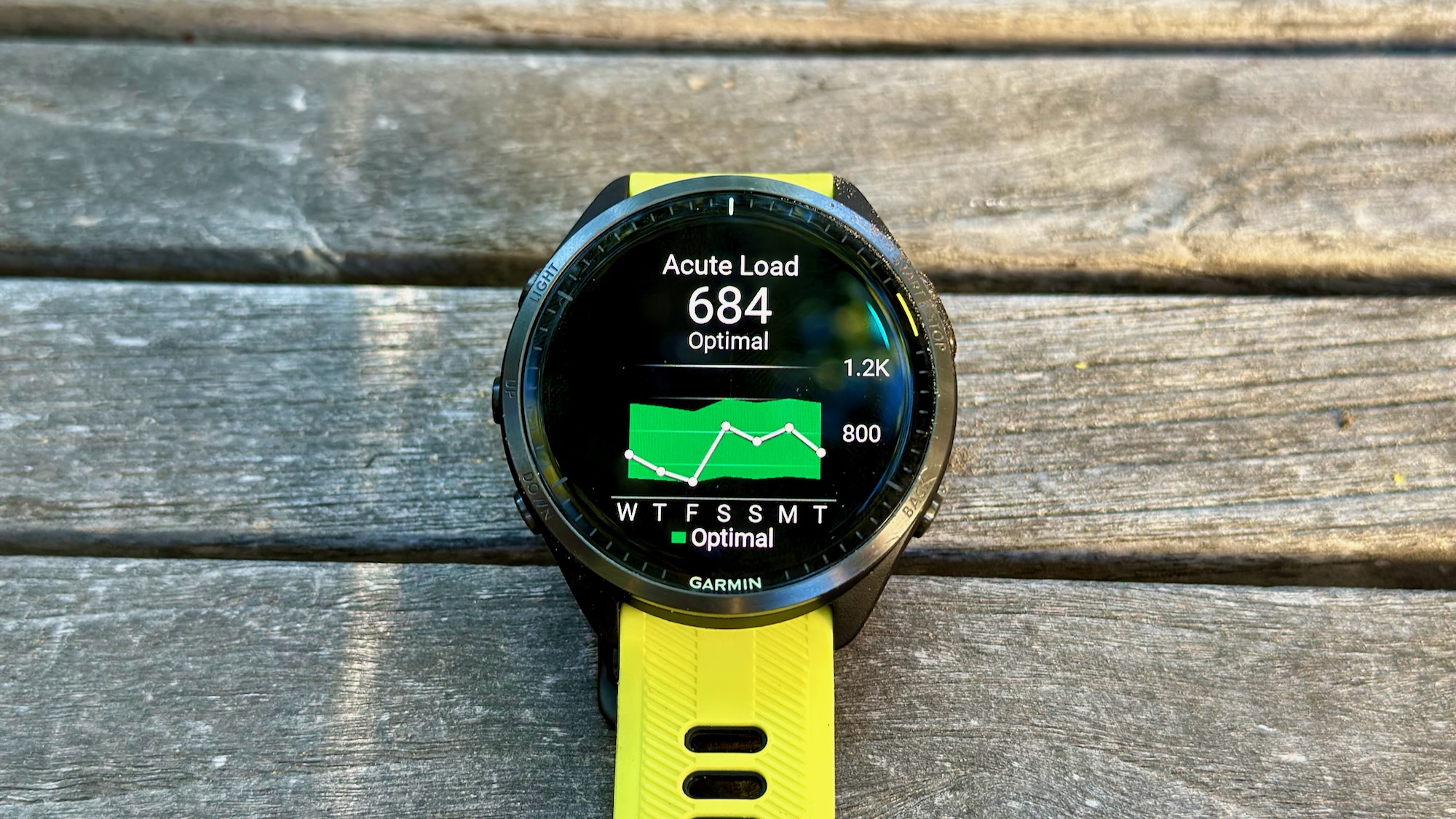

In this weekly column, Android Central Wearables Editor Michael Hicks talks about the world of wearables, apps, and fitness tech related to running and health, in his quest to get faster and more fit.
Apple and Google/Fitbit jumped onto the training load bandwagon in 2024, and it's long overdue. I credit my boosted VO2 Max directly to following my running watches' training load guidance, especially Garmin's training load focus graph. But no brand does it perfectly, and I'm more than happy to vent about their flaws.
Some leave their training load data too vague to understand. Some don't differentiate enough between different types of load. And some put too much weight on your heart rate average when deciding on load instead of your varied heart rates throughout a run.
I'd love to combine training load elements from Garmin, Coros, Apple, and Fitbit into one ideal training tool that better reflects my actual training effort.
The training load TL;DR
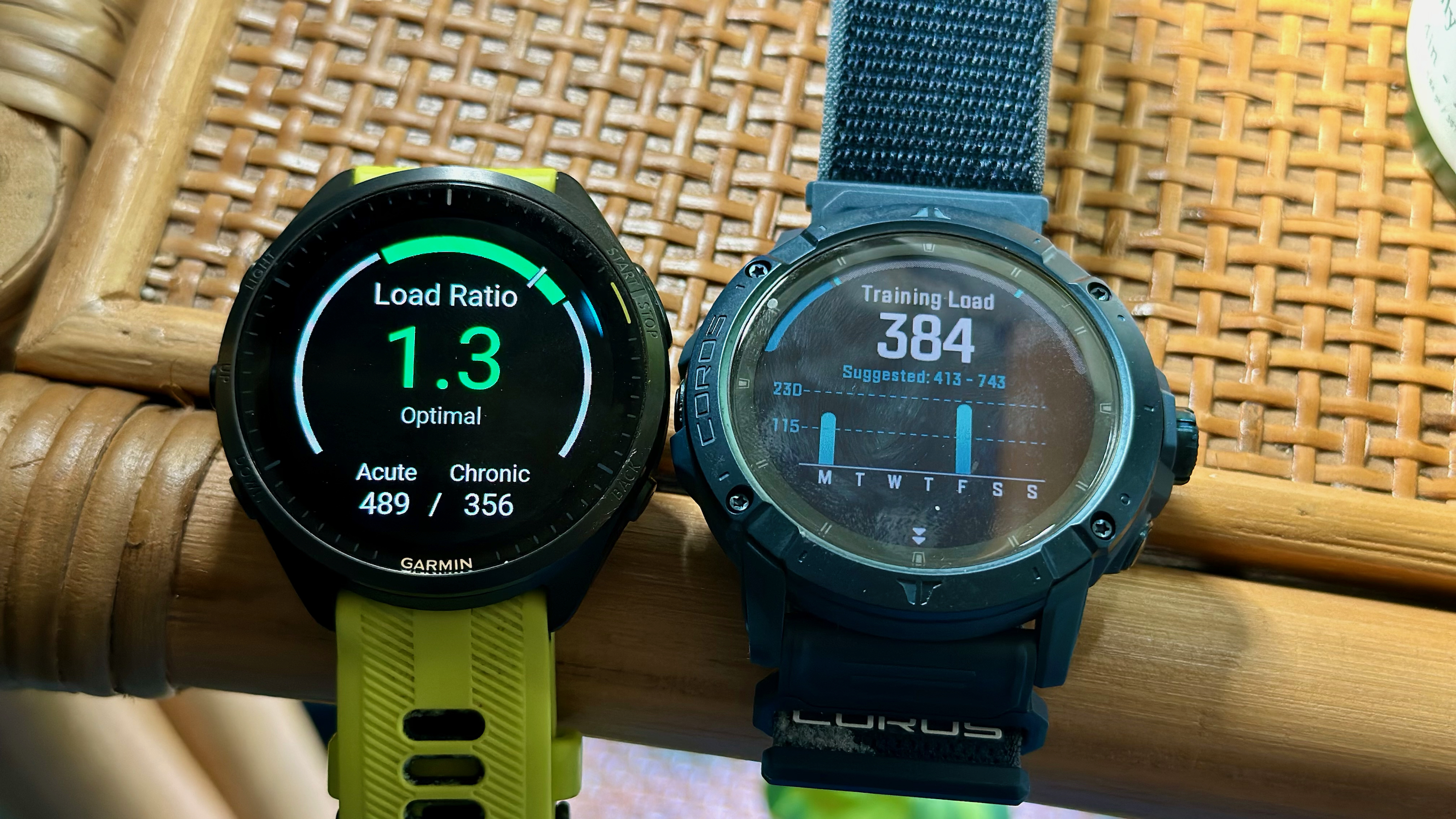
For people who have no idea what I'm talking about, training load is an arbitrary number calculated by your minutes of activity multiplied by your heart rate effort level.
A 30-minute zone-2 or 3 run might net you 60 points of training load (aka 30 x 2), while a steady two-hour walk might only give you 40 points (120 x 0.33). A 15-minute track workout might net you 150–200 points, depending on your effort.
Different brands calculate load with similar methods but their own multipliers and unique heart rate zones. I ran a 10K wearing four watches today and got training load scores of 130, 140, 160, and 220 despite near-identical HR and GPS data. As I said, the number is arbitrary.
Why does it matter, then? Because they compare your acute load — your added-up score across a week of workouts — against your chronic load — four weeks of workouts — and see how they compare. You always want your recent acute load to match or beat your long-term chronic load. It doesn't matter if your load total is 200 or 1,000, only whether it's a better number than it was last week or month, without being so much higher that you hurt yourself overtraining.
Get the latest news from Android Central, your trusted companion in the world of Android
What Garmin gets right (and wrong) about training load
Like other brands, Garmin tells you if your acute load is "optimal" to get fitter, with a training load ratio comparing your weekly total and monthly average. What I especially need, though, is "training load focus."
Under Training Status on my Garmin Forerunner 965, I can find a graph that splits my four-week load into three categories: anaerobic, high aerobic, or low aerobic workouts.
Conventional running wisdom is that you can't improve your VO2 Max by running hard every time. You need "conversational pace" workouts in lower heart rate zones to improve base fitness (low aerobic), plus max-effort sprints where your body can't gain oxygen fast enough and burns muscular energy instead (anaerobic).
Garmin's graph yells at me every time I have a low aerobic or anaerobic "shortage," so I make a point of varying my training load types, whereas other brands might simply encourage you to gain as much load as possible. It's helped me improve my VO2 Max from 46 to 51 in the past year or so.
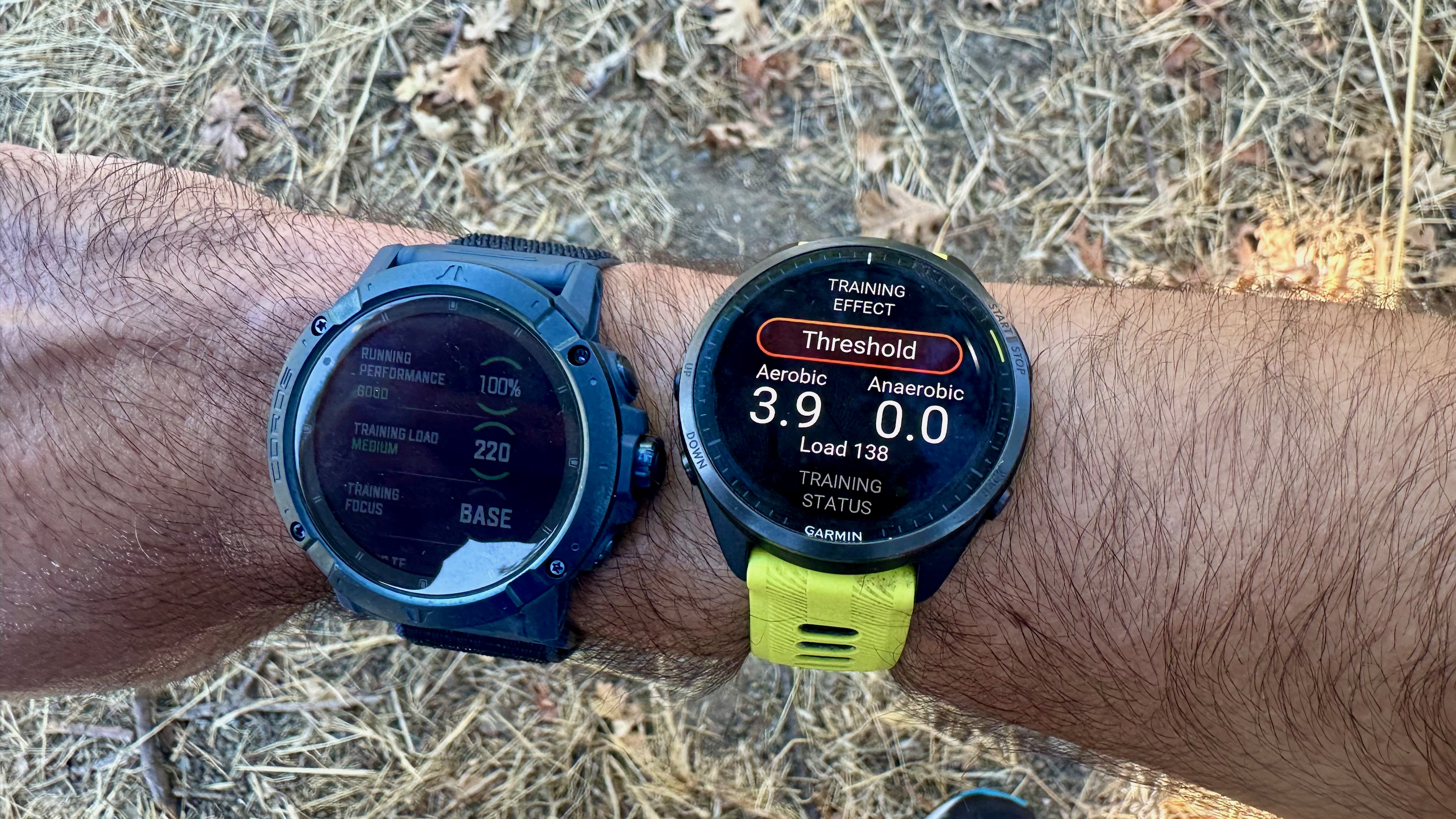
My one (major) complaint with Garmin training load focus is that it puts way too much stock on heart rate average. If I run three miles in my zone 2 heart rate zone (HRZ), I usually get about 60 low-aerobic load. Today, I ran three miles in zone 2 and three miles in zones 3–4; in the end, all of that load went directly to high aerobic.
Every run "is analyzed from start to finish to determine the *primary* category into which it falls," the Garmin Forerunner team explained to me. They do "split the load within an activity into anaerobic and aerobic, but we will not further split it into high and low aerobic."
When I asked if they would "consider calculating and splitting up load focus based on mile splits or other criteria," I received the rather terse response, "We have considered it."
Their reply made me less than optimistic, but in an ideal world, Garmin would split up training load in smaller increments instead of focusing on the average. That way, I could jog for a few miles and then end with a high-aerobic mile for fun without worrying that it'll drag the average up enough to cancel out my earlier restraint.
I'm also skeptical about how well Garmin's aerobic/anaerobic split works, for what it's worth. I ran a half marathon last month where I was mostly in zones 3/4 but consistently hit 90%+ my maximum heart rate for most of the last 30 minutes. I got no anaerobic training effect at the end, only high aerobic.
What Apple, Fitbit, and Coros get right (and wrong)
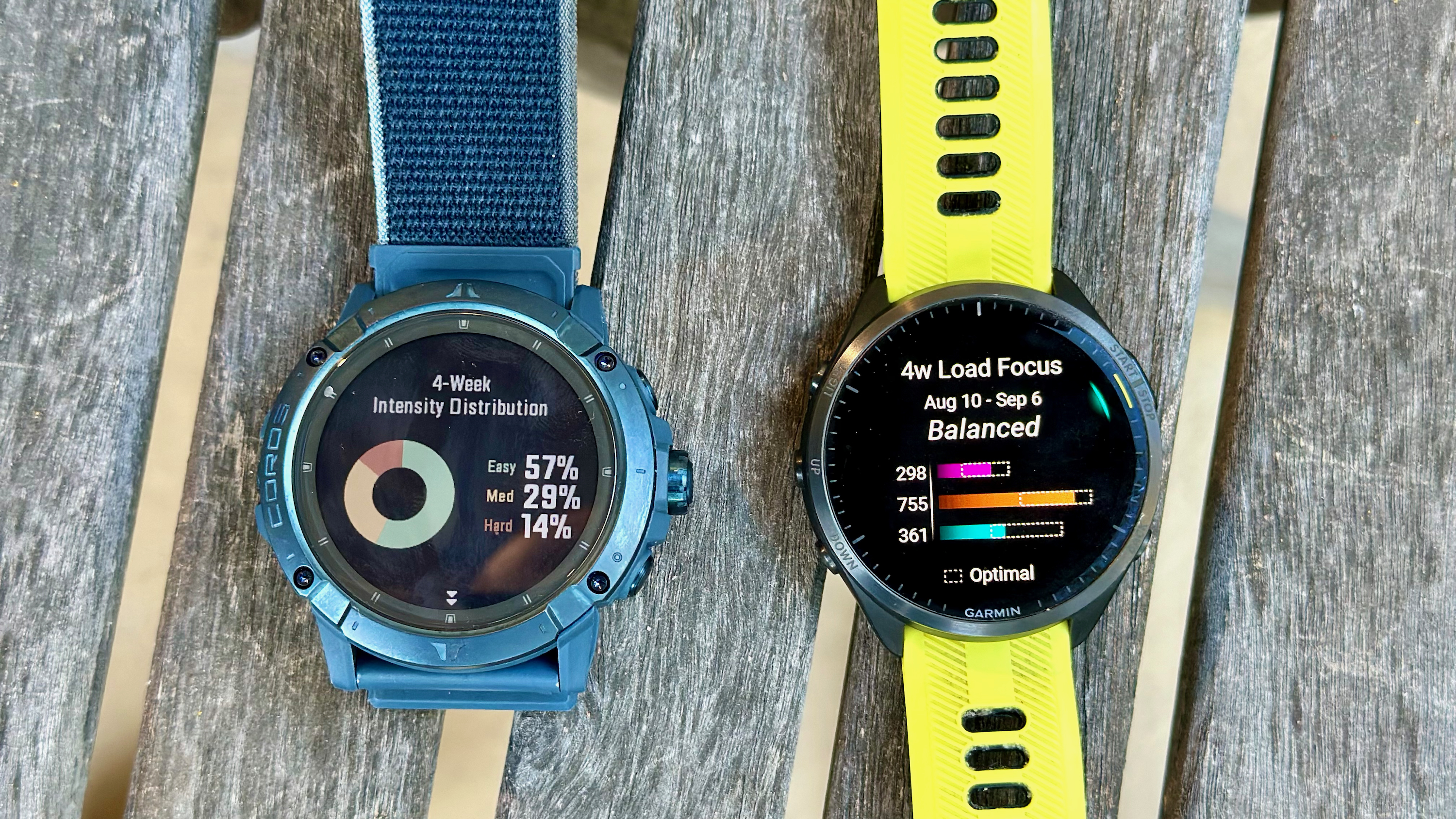
My ideal training load system would use the guts of the Garmin experience. I still love its training load focus and daily suggested workouts that adjust based on whether you need more anaerobic or low-aerobic load. I'd just "borrow" some things from Coros, Apple, and Fitbit/Google.
With my COROS Pace 3 or Vertix 2X, I don't have to worry about averages. Each run splits the training load into three categories: easy, medium, and hard. So, when you look at the four-week intensity distribution graph, you know it's accurate. You also get more specifics with the monthly Pace Zone Distribution graph, which splits exact load totals across each heart rate zone.
What holds me back from using COROS more often is the lack of guidance. I like how Garmin marks the "optimal" easy/hard training load I should have and adjusts workout suggestions accordingly, whereas COROS lets independent runners figure that out for themselves. I'll admit I need the extra help.
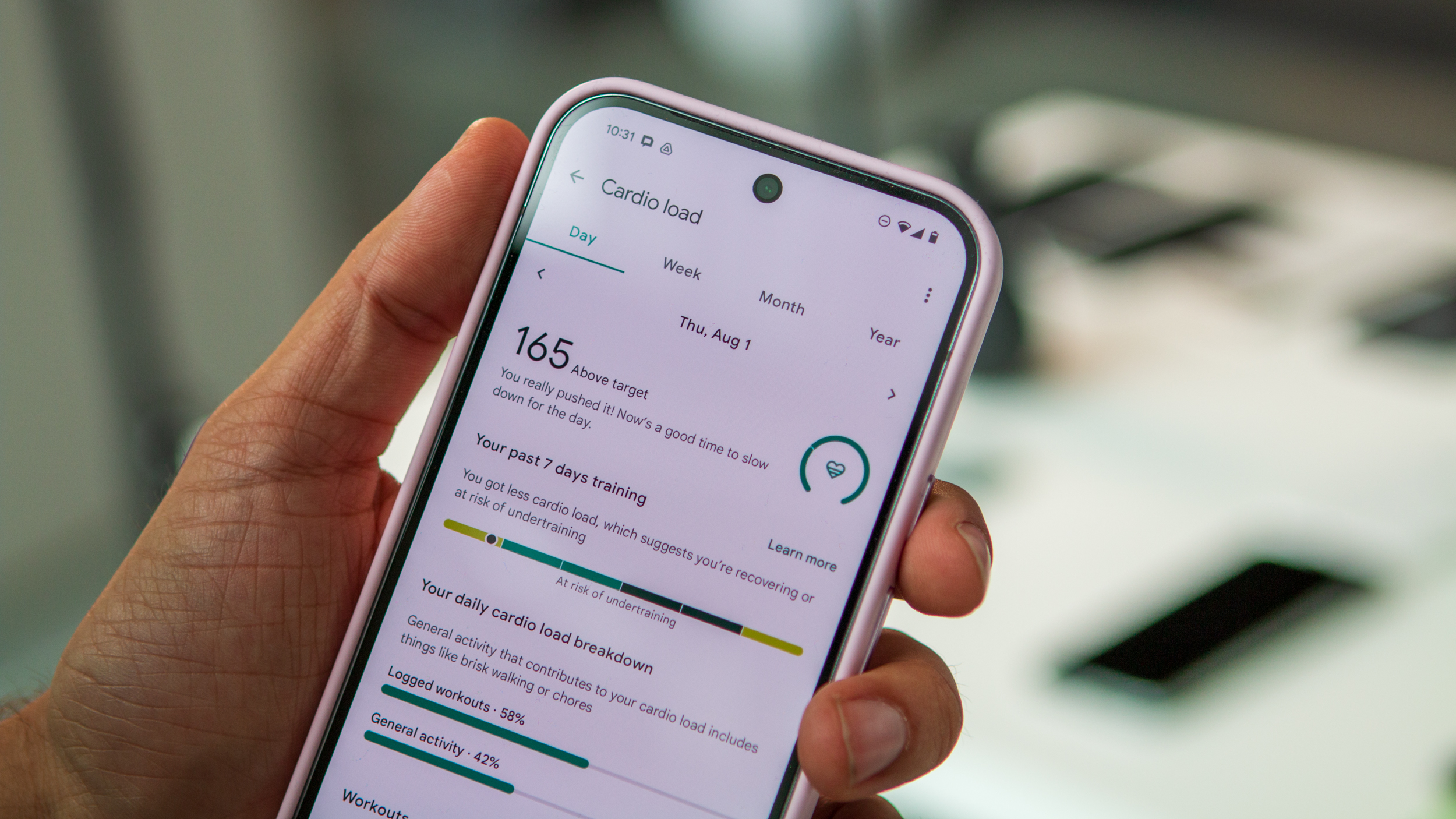
I can't talk specifics about Fitbit Cardio Load, the brand-new system being added to the Pixel Watch 3 and other Fitbits, until I can review the watch. Talking exclusively about what Google revealed publicly at its Made by Google event, I love that Fitbit calculates load based on both "logged workouts" and "general activity."
Every other fitness watch brand only tracks training load if you're "training." But Fitbit doesn't distinguish; you can get training load any time your heart rate elevates above the norm, regardless of the activity. Some people might prefer having more control over training load, but others will like being validated for sweaty everyday tasks or walking their dog for 10 minutes. Little things add up.
As for Apple, I haven't had a chance to test its new 7- and 28-day training load graphs yet; they look promising and accessible for casual athletes, if a bit short on the numbers Garmin and Coros offer.
What I do like about Apple is how you can manually change your training load impact by rating the workout intensity from 1–10. I've been doing more hiking recently, and Garmin tends to lowball my training load for hikes because my heart rate is fairly steady, even if my muscles are getting sore from the hills and valleys. I wouldn't mind being able to bump up (or down) my load numbers when I feel like the auto-generated number isn't perfect.
No fitness watch gets things perfect with training load. Each has its strengths and disadvantages. And frankly, I'd rather have an imperfect training load tool than no load at all! The fact that more brands are implementing it means that we'll see more innovation across the board as they, ahem, "borrow" from one another.
For now, I'm going to keep using Garmin, but I'll have to keep using my workaround: End a run when I'm done with one workout type, and then immediately start another run at high aerobic or anaerobic. Maybe one day, Garmin will let me relax on monitoring my HR average so closely.
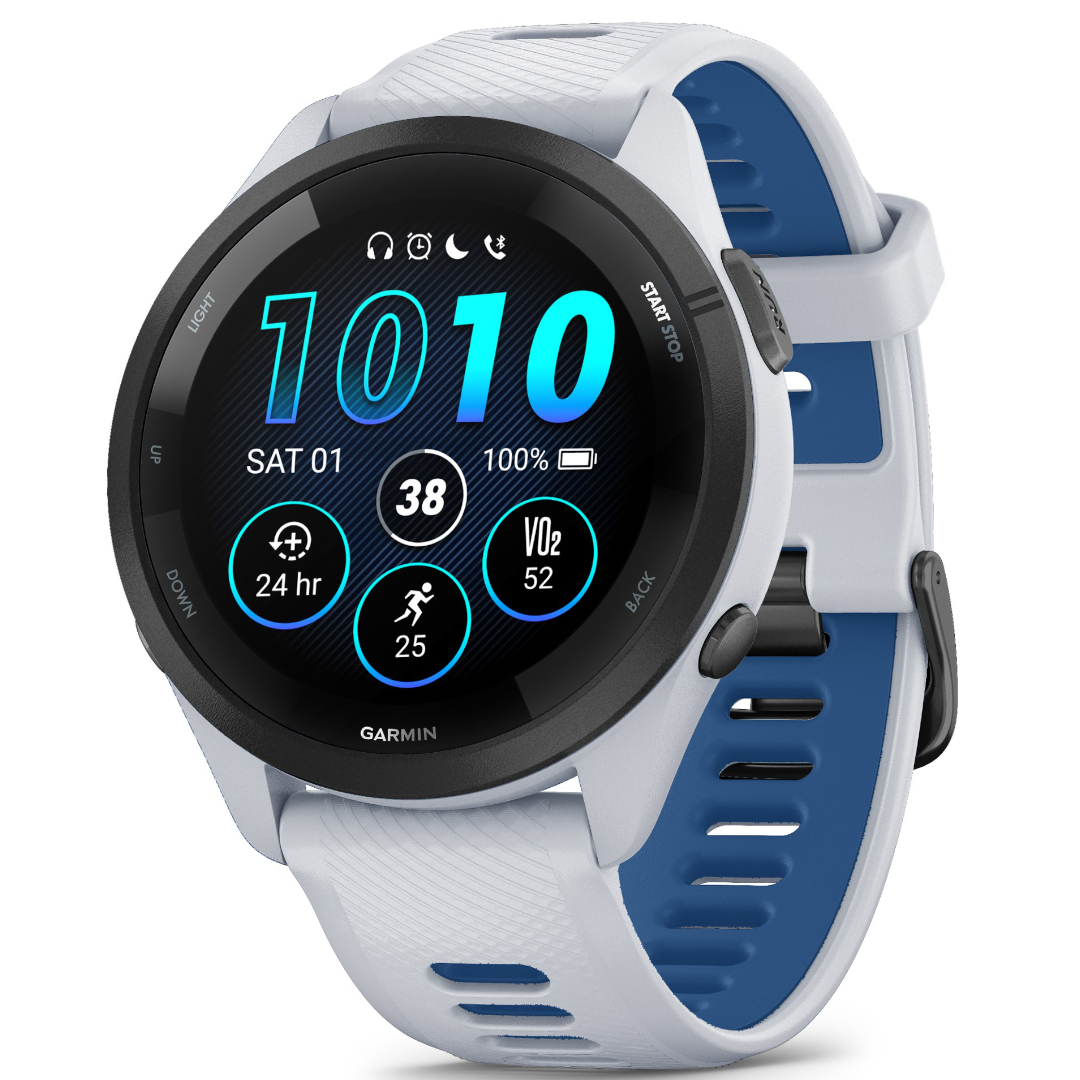
Start tracking training load
While I prefer my pricier Forerunner 965 for battery life, the Forerunner 265 has all of the same training load focus guidance and tailored daily workouts for $200 less. It lasts about two weeks per charge, it has accurate dual-band GPS, and it's one of the best running watches out there.

Michael is Android Central's resident expert on wearables and fitness. Before joining Android Central, he freelanced for years at Techradar, Wareable, Windows Central, and Digital Trends. Channeling his love of running, he established himself as an expert on fitness watches, testing and reviewing models from Garmin, Fitbit, Samsung, Apple, COROS, Polar, Amazfit, Suunto, and more.
You must confirm your public display name before commenting
Please logout and then login again, you will then be prompted to enter your display name.
